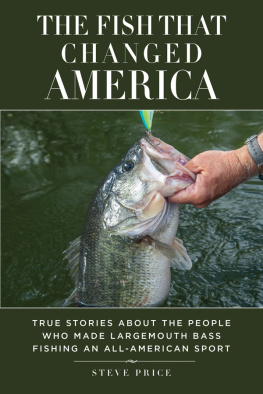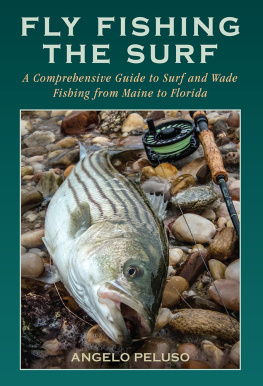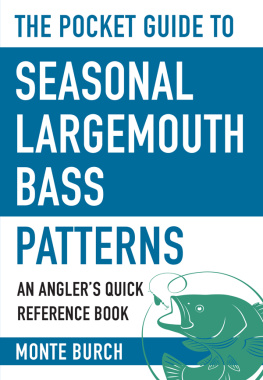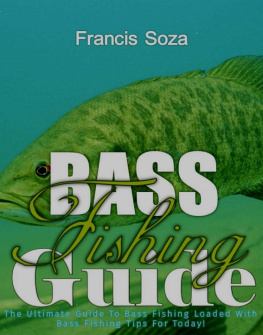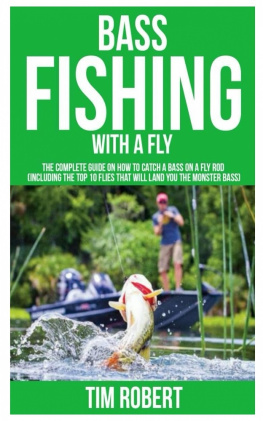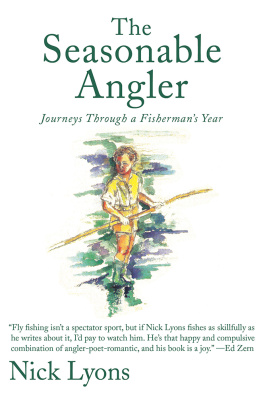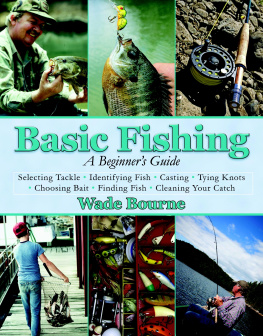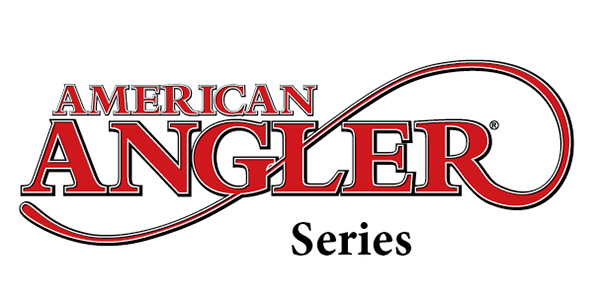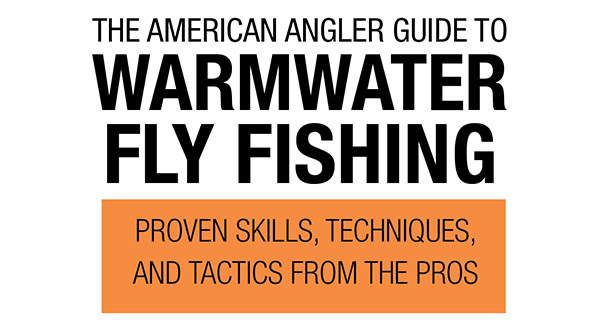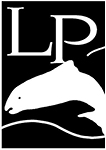This book is dedicated to my family: Kyra, Caleb, and Samuel Perkinson; my parents, Mike and Linda Perkinson; and Craig Perkinson, my brother and fishing partner for the last thirty-plus years. Thank you for all of your support!
Copyright 2014 Nathan Perkinson
ALL RIGHTS RESERVED. No part of this book may be reproduced or transmitted in any form by any means, electronic or mechanical, including photocopying and recording, or by any information storage and retrieval system, except as may be expressly permitted in writing from the publisher. Requests for permission should be addressed to Globe Pequot Press, Attn: Rights and Permissions Department, PO Box 480, Guilford, CT 06437.
Lyons Press is an imprint of Globe Pequot Press.
All illustrations by Robert Prince
All interior photos by Nathan Perkinson unless otherwise noted
All fly photography by Kyra Perkinson
Project editor: Staci Zacharski
Text design: Sheryl P. Kober
Layout artist: Sue Murray
Library of Congress Cataloging-in-Publication data is available on file.
ISBN 978-1-4930-0772-1
Contents
Introduction
I distinctly remember thinking as a kid that if I had a fly rod to fish our local warmwater streams, I would only catch trout. Of course, there were no trout in the warm, rich farmland streams of southeastern Indiana, but fly rods were only for trout in my young mind. Fly fishing was high sport for adventurous mountain climbers and stuffy rich folks being paddled around by well-paid guides. To a kid who spent his summers catching redears, smallmouth, and catfish with a Zebco 33 and a 5-foot glass rod, fly fishing was simply a foreign concept. I spent a great deal of my youth on the water, but it did not occur to me until I was grown up and married off that the same fish I caught on Hula Poppers and Rebel Crawfish would take flies.
One day I expressed a little interest in trying out fly fishing, so my wife bought me a fly-tying kit. I procured a circa-1982 ultraslow fiberglass fly rod, complete with a plastic reel and a floating line that really didnt float anymore. Game on.
Armed with crude, outdated tackle and admittedly ridiculous homemade flies, I learned to cast and to catch fish. I caught bluegills, redears, and crappies as well as largemouth and smallmouth bass. And I had a blast. Like many fly anglers, my condition worsened to the point that I moved to trout country to take on rainbows, browns, and brookies. I enjoy trout fishing, but the coldwater bug never completely took over. Even with excellent trout streams within a few miles of my house, I still get fired up when there are crappies in the shallows or I hit an especially good evening of top-water bass bugging.
As you read through this book, I hope that you will get excited at the prospect of catching warmwater fish on fly tackle. A lot of Americans live far enough from a quality coldwater fishery that a day trip for trout is out of the question, but everybody lives close enough to some river, creek, pond, or lake that is full of bluegills, bass, pike, or carp. These species and many more are ready to take your fly and give you a thrill.
If you are already an accomplished warmwater angler, I hope that I can share something new with you. If you are a coldwater angler, I would love to show you how bass and pike can be just as sporting as trout and salmon. And if you are completely new to the sport, I invite you to explore the amazing world of warmwater fly fishing with me. Well have a look at the most popular warmwater gamefish as well as the equipment and techniques that you can use to catch them.
Im always adding to my library of books about fly fishing, gear fishing, and tackle as well as books about fish biology and ecology. The fishing books that you accumulate will become a powerful resource and open doors to fishing adventures that you havent even dreamed of yet. If you are only interested in freshwater fly fishing, you can still learn a lot from books about spinning or saltwater fly-fishing. Take what you learn and try it out on the water.
Dont just buy this book, thumb through it, and toss it aside. Scribble notes in the margins and dog-ear the pages that you want to come back to. Circle a few hot spots in the last chapter that you want to go fish. Toss this book in your backpack so you have something to read during sixth-period chemistry. Put it in your briefcase and look at the pictures while youre in a meeting. It doesnt matter if you live in Saint Paul or Saint Petersburgthere is great warmwater fly fishing right around the corner. Buy an expensive fly-fishing outfit if you can afford it or a cheap one if you cant. Get out there, catch some fish, and have fun!
Chapter 1
Know Your Warmwater Fish
It is important that you understand the habits and habitats of the warmwater gamefish that you will pursue. This knowledge will help you identify waters that hold your target species, as well as the areas in each body of water that are most likely to hold fish. As a fly angler you should also have a working knowledge of the type of prey that your quarry prefers. Fly fishing requires a great degree of deception. We voluntarily forgo the use of baits and scented lures, making it all the more important that you understand where the fish live and what they eat. The more that you know about the fish you are trying to catch, the easier it will be for you to catch them.
Key Species
The key species are the major warmwater gamefish that will likely be your main angling focus. Well define key species as the fish that are intentionally sought for their value as sport fish or for food, while keeping the limitations of fly fishing in mind. Bass are a key species because most anglers seek them for sport, while crappies are sought for their excellent taste. I dont consider catfish a key species for fly rodders because, while they are great fighters and excellent table fare, they usually end up on the business end on a fly rod while you are out for other species.
Largemouth Bass
Micropterus salmoides
Range: The native range of largemouth bass is the eastern United States. However, through extensive and successful stocking programs, largemouth can now be found in every state except Alaska. You can even catch largemouth bass in southern Canada, Australia, Japan, and many European countries.
Preferred Water Temperature: Largemouth bass prefer water temperatures between 50F and 80F. They spawn in the spring when water temperatures are around 65F and feed most actively when the water temperature is above 68F.
Preferred Habitats: Largemouth bass inhabit warmwater lakes, reservoirs, ponds, and strip-mine pits as well as warmwater rivers and creeks with slow to moderate flows. Largemouth are frequently found in relation to some sort of cover or structure. They are especially fond of flooded timber, weed beds, and steep drop-offs into deep water. Largemouth bass may be found in water with a mucky bottom, but move into rocky shallows to spawn in the spring. They are usually found in water between 1 and 20 feet deep, though extreme temperatures may drive largemouth into deeper water.


